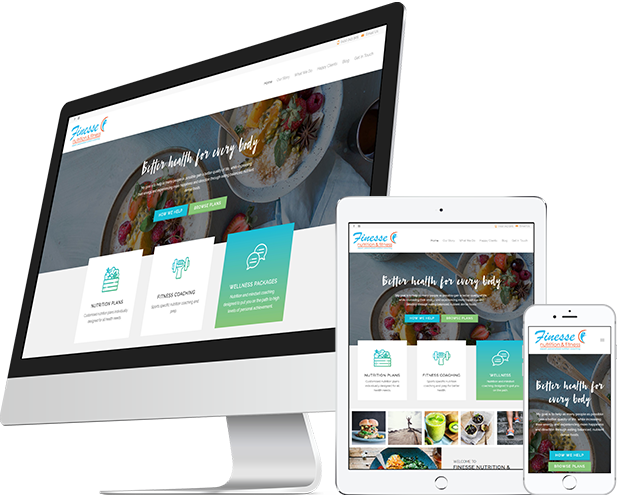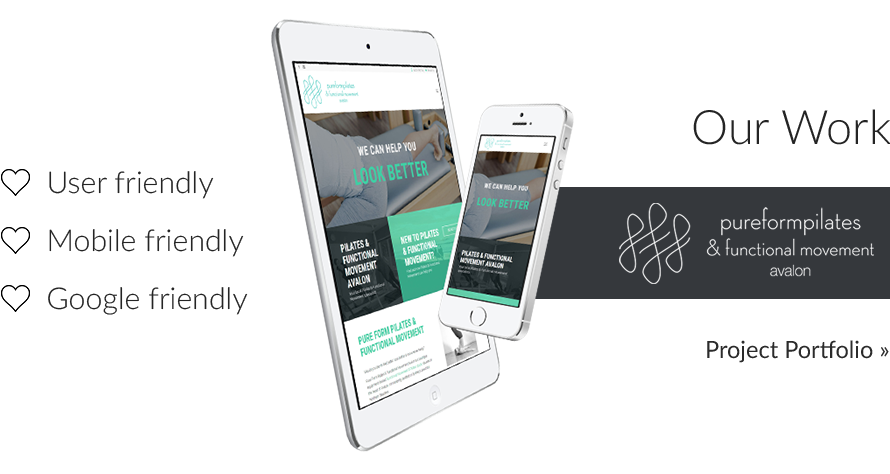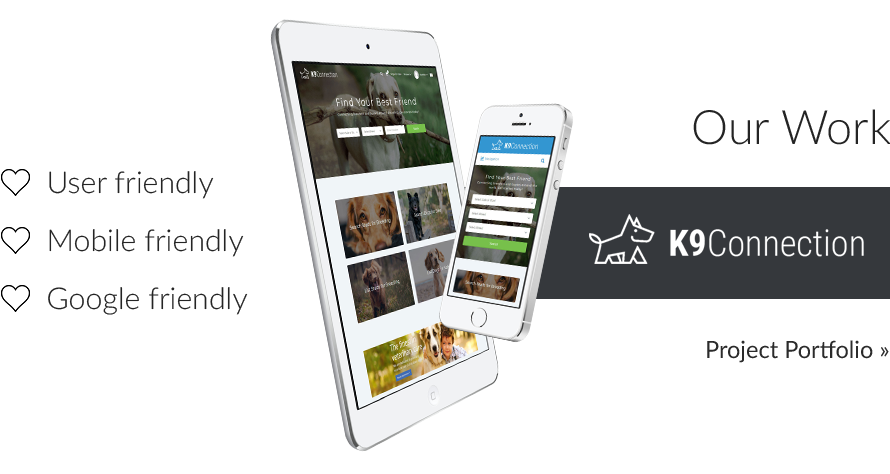What you need for your online store.
Steps to eCommerce success.
Australia is quickly becoming an eCommerce powerhouse. With almost $2 billion in revenue last year alone, we are truly a global player when it comes to online shopping.
What does this mean for you? Quite simply, it is time to get your piece of the action! For startups, it is vital in this competitive marketplace to start off on the right foot with a professional online store that is equipped with the online marketing and sales tools to help your business thrive in this growing industry. Or for existing businesses, a high-quality eCommerce website can compliment your existing bricks-and-mortar shop by allowing you to reach more customers than ever before and generate more income.
And eCommerce web design is not just limited to retail. Online bookings and payments, subscriptions, memberships – there are endless possibilities for how eCommerce can enhance and grow your business, and the AusWeb Design team have the experience and skills to take you there!
5 min read
1. Create your eCommerce gameplan
The first step when laying the foundations for your eCommerce store is planning, just the same as if you were opening a physical shop. Now is the time to decide what you’re going to offer – you might have one product to sell online, an extensive catalogue, event tickets, ongoing subscriptions, or business services to name a few possibilities. Understanding the scope of your online store now allows you to identify your starting point, and a view of how you want your business to grow.
Now is also the time to figure out the larger scale as well as daily operations of your eCommerce business. When it comes to selling products online, are you aiming for a lower price point with a smaller profit margin, with an emphasis on moving a lot of stock? Or are you selling quality, high-end goods? Are your products made in-house, or do you need to find a supplier?
Now is also a good time to decide on your store policies, for example what kind of warranties and guarantees you will offer. Another major factor in business profitability and customer satisfaction is a solid refund policy. Decide how long a customer will be allowed for a return for change-of-mind, whether you will cover the return postage or if this will be up to the buyer, and how you will handle faulty item refunds. Outlining these policies not only go a long way in keeping your customers happy, they can also prevent you from landing in hot water!
Having these details down as a first step will ensure much smoother operations down the track, once customers start spending in your store.
2. Figure out the details
Once you have all the basics sorted, the next step is deciding on the daily operations of your eCommerce website. A bit of research and careful planning will go a long way – that old saying ‘the devil is in the detail’ really applies here!
Product Catalogue
It is vital that your online store has a well-organised catalogue to enable your customers to quickly and easily find what they’re looking for – you probably know from experience that if you can’t easily find something on an eCommerce site, you’re not likely to stay on that website very long.
The best way to manage your catalogue is through the use of intuitive and clear product categories. Visit some of your favourite online stores – chances are one of the reasons you like them so much is that their catalogue is well-thought out and you can find exactly what you need within a few clicks.
The key here is to make your categories specific. If you are running a clothing store, don’t stop at “Tops” and “Pants”. Drill it down further and include “Short Sleeve” and “Long Sleeve”, “Denim” and “Chinos”, and so on so customers can filter the options to find exactly what they’re looking for.
Payments
A payment gateway is an important consideration – after all it facilitates the reason you opened a store in the first place … money! A simple, intuitive and most of all secure payment system will instil trust in your brand and encourage shoppers to come back.
There are many different options available for receiving payments, but you can’t go wrong with PayPal. As a widely-used and versatile payment system, their security is top notch and it even comes built-in with WooCommerce, one of the most popular eCommerce platforms in use today. If your customers don’t have a PayPal account, they can still pay with their credit card, and the trusted PayPal interface will reduce concerns about online security.
Using PayPal means that your payment process will be easy, secure and streamlined, and will mean that you will not have to monitor site security and fill out endless forms with your bank as you would if you wanted to accept credit card payments directly on your site.
Shipping
There are a mind-boggling array of options for shipping, from default choices built in to eCommerce platforms, to Australia Post and private courier companies. Which option you decide to go with will depend on various factors, including the location from which you will be posting goods and your desired order turnaround. Will you offer a flat rate for shipping? Or will you offer free shipping? If so, how will you offset the cost of postage and possible returns?
We usually recommend Australia Post as the main shipping option for our eCommerce websites. They offer a range of postage options, such as registered and express post and airmail, and you can send out all your orders from your local post office. The shipping settings on your site are directly linked to the Australia Post database, meaning that your backend is always up to date with the latest shipping fees.
If you want to use a private courier service as part of your shipping, make sure to do some research on the fees and other factors involved. You want to make sure that your shipping rates are reasonable so as not to deter customers from buying, and if you choose to offer free postage, you do not want shipping costs eating into your profits.
Or, you might even want to look into a ‘drop-shipping’ business model which is becoming increasingly popular worldwide. Instead of purchasing and storing stock, drop-shipping allows your customers to buy through your site, and the product is shipped directly to the customer by an external distributor.
3. Your online presence and branding
Once you have your overall plan and the day-to-day workings of your online shop worked out, then it’s time to get the ball rolling on your branding and getting your eCommerce website built. A professionally-designed logo and strong branding focus that communicates your unique selling point as a business will not only help attract your target market to your store, but will also help differentiate you from your competitors. Effective logo design and branding will create a strong identity for your business, and this should also reflect on your eCommerce website design.
Your website is just as important as the shopfront for a physical store and you want to ensure the right tools are implemented for conversion focus, as well as allowing visitors to browse your catalogue easily and locate your contact details efficiently. Working with experienced eCommerce web designers will mean that your branding is well integrated into the ‘look and feel’ of your site, and that UX (user experience) principles influence every aspect of the site to encourage buyers to not only remain on your site, but also buy your products and return time and time again for an enjoyable shopping experience!
Another reason we recommend working out the details of your daily store operations in terms of payments, shipping and your product catalogue before moving on to having your website developed is that these factors can influence which eCommerce platform is right for you. A good eCommerce web designer can also answer any questions you have around these (as well as any marketing ideas you have – more on that soon!) to recommend the best eCommerce content management system that offers the functionality you need.
4. Get the word out!
Once you have set up your payment gateways, shipping, worked with a quality web agency to get your eCommerce site up and running and loaded your product catalogue into your website, it is time to unleash your online store on the web! But the work doesn’t stop there – once your website is live, it’s time to kick your online marketing plan into gear. The awesome thing about marketing for eCommerce is that there are so many exciting ways to promote your store, and keep customers coming back. As well as search engine optimisation (SEO), Google AdWords and other more traditional forms of digital marketing, with eCommerce you have so many opportunities to get creative with your on-site marketing too.
Encourage visitors to opt-in to your latest news and promotions by integrating a popup which gives them a discount voucher for signing up. Or, utilise abandoned shopping cart emails to remind shoppers that they still have items waiting to be purchased, or send post-transaction follow-up emails to nurture buyers and keep your online store in the front of their mind.
Other functionality such as product reviews, social media such as an Instagram feed showcasing how buyers are using your products, and integrations into the Facebook marketplace are just some of the amazing ways to take your eCommerce marketing to the next level and help your business grow!










